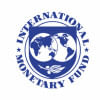Reforms proposed by IMF have been planned by the govt before

The International Monetary Fund (IMF) concluded their much-awaited mission in Bangladesh on November 9. The visit had a positive outcome as the Bangladesh government and the IMF reached a staff-level agreement, which happened within a reasonable timeframe suggesting that the differences between the Bangladesh government and the IMF agendas were not insurmountable. An IMF press release notes that Bangladesh will receive funds under three programmes, with different grace and maturity periods. Although the IMF did not disclose the targets for monitoring indicators, it seems that the targets would be reasonable such that the country should be able to accomplish them in a medium term – that is, within 42 months from now.
What is important here is that some of the prescriptions – increasing investment in the social sector encompassing health, education and social protection – are indeed long-term demands in Bangladesh. Moreover, allocating one-third of the USD 4.5 billion loan to climate safeguarding is also a welcome move. Other areas where the IMF has suggested reforms include revenue mobilisation and modernising the monetary policy framework.
The finance minister at a recent press conference also claimed that Bangladesh would be receiving IMF funds according to our terms and conditions. It thus transpired that the reform agenda prescribed by the IMF was also Bangladesh's reform programme. It is relevant to note that the above reform agendas have also been the core programmes elaborately discussed in our recent planning documents (i.e. 8th FYP and 7th FYP), which were approved by our highest decision-making authority. Since these reforms/programmes are owned by the Bangladesh government, they should not be difficult to accomplish.
However, it appears that, until recently, Bangladesh has not been serious about implementing the promises made in the planning documents. Revenue mobilisation as a ratio of GDP (i.e. tax efforts) has been falling. Automation and tax administration reforms have been slow. The cost of the low effort is estimated to be high. A recent policy brief prepared by the PRI Centre for Domestic Revenue Mobilisation found that raising additional revenue of five percentage points, with revenue structure of 70 percent in favour of direct tax and their subsequent investment in infrastructure (30 percent), social sector (25 percent), social protection (15 percent) and agriculture (10 percent), is likely to add 3.3 percentage points to the current real GDP growth. This is a massive finding: realisation of this alone can help Bangladesh achieve 10 percent GDP growth.

Interest rate is an important monetary policy instrument. By putting a cap on it, the Bangladesh Bank has made the tool ineffective in its fight against inflation. High inflation and capped interest rates at much lower levels than inflation have pushed the real interest rate into the negative zone, which may result in difficulties to attract deposits.
Social sector (i.e. education and health) investment has historically been low in Bangladesh – at around 2.7 percent of GDP. Low social sector investment has long-term implications regarding workplace productivity. Perhaps this is one of the reasons why Bangladesh has not yet been able to optimise the demographic dividend bestowed naturally upon us as a result of demographic transition. Viewing from lifecycle lenses, investments on children, youth and women are very low. According to the estimate of the Bangladesh National Transfer Account (NTA), a UN framework to assess income, consumption and transfers across age cohort 0 to 81, the lifecycle deficit of children (LDC-C) has increased from Tk 1.763 trillion in 2010 to over Tk 4.294 trillion in 2020. significantly. The share of public transfer to cover the LCD-C is only around eight percent, suggesting overwhelming reliance on the private transfer. Youth unemployment is over 10 percent, more than double the national unemployment rate. The NEET (not in education, employment or training) population is also large. Only 36 percent of the working-age women are participating in the labour force. Additionally, significant numbers are in informal employment with a high care burden on them.
It is now imperative that Bangladesh makes strong commitment to the above reforms, which are owned by the government. Along with revenue and financial sector reforms, the government must also agree on a formula to utilise the additional revenue that may emerge out of these reforms. In addition to looking into sectoral allocation, the government must also consider lifecycle groups when determining the distribution or allocation formulae. Among various groups, children and youth should get priority as they are critical for the country's future development. These groups are likely to yield high dividends in terms of increased wealth and revenues in the future, which in turn can finance future public programmes. The country must also agree to channel disproportionally higher investment to women as Bangladesh's development vision would remain unfulfilled if 50 percent of its population is left behind.
Dr Bazlul H Khondker is an economist and a former professor of economics at Dhaka University.

 For all latest news, follow The Daily Star's Google News channel.
For all latest news, follow The Daily Star's Google News channel. 










Comments